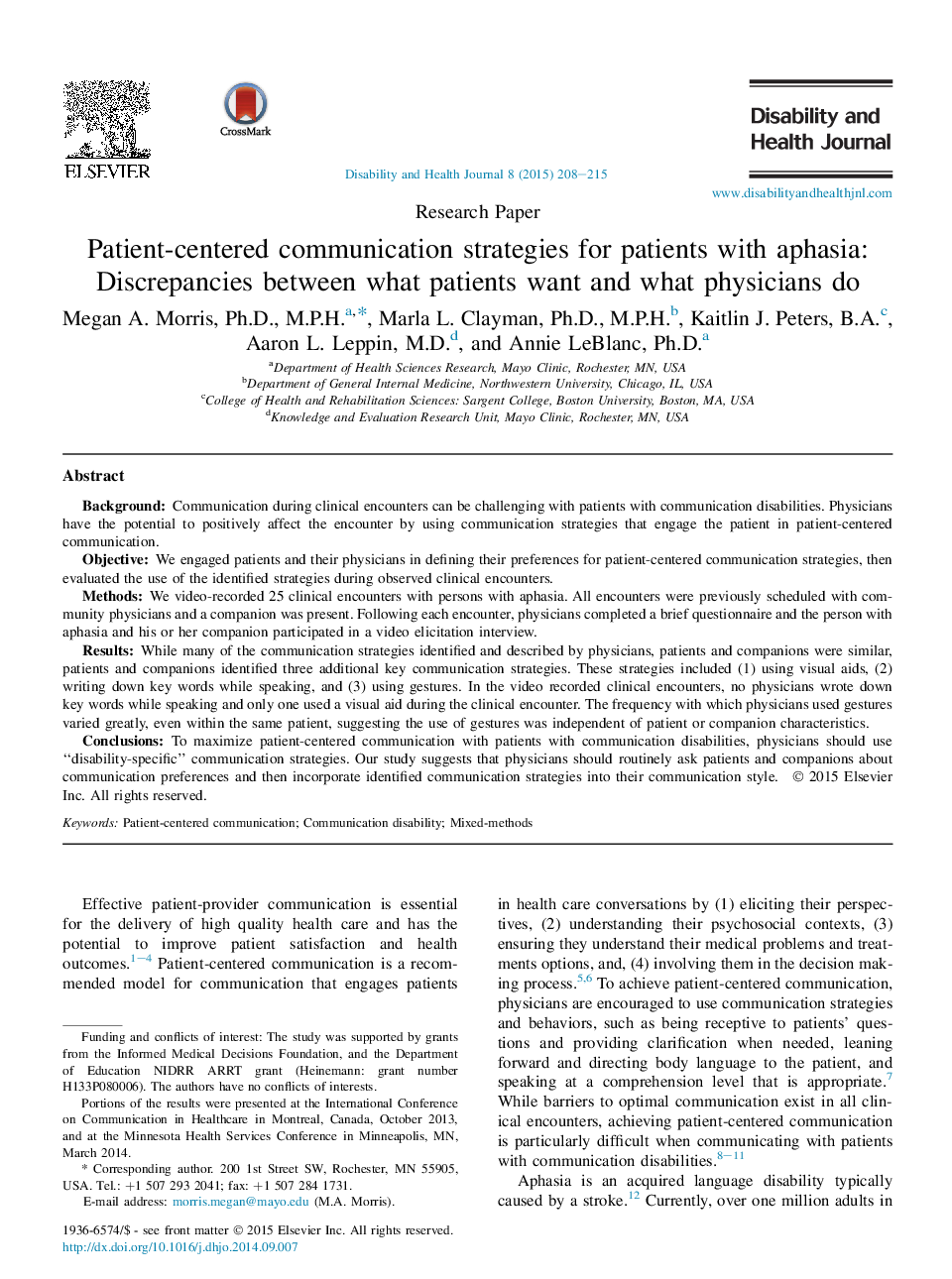| Article ID | Journal | Published Year | Pages | File Type |
|---|---|---|---|---|
| 4197156 | Disability and Health Journal | 2015 | 8 Pages |
BackgroundCommunication during clinical encounters can be challenging with patients with communication disabilities. Physicians have the potential to positively affect the encounter by using communication strategies that engage the patient in patient-centered communication.ObjectiveWe engaged patients and their physicians in defining their preferences for patient-centered communication strategies, then evaluated the use of the identified strategies during observed clinical encounters.MethodsWe video-recorded 25 clinical encounters with persons with aphasia. All encounters were previously scheduled with community physicians and a companion was present. Following each encounter, physicians completed a brief questionnaire and the person with aphasia and his or her companion participated in a video elicitation interview.ResultsWhile many of the communication strategies identified and described by physicians, patients and companions were similar, patients and companions identified three additional key communication strategies. These strategies included (1) using visual aids, (2) writing down key words while speaking, and (3) using gestures. In the video recorded clinical encounters, no physicians wrote down key words while speaking and only one used a visual aid during the clinical encounter. The frequency with which physicians used gestures varied greatly, even within the same patient, suggesting the use of gestures was independent of patient or companion characteristics.ConclusionsTo maximize patient-centered communication with patients with communication disabilities, physicians should use “disability-specific” communication strategies. Our study suggests that physicians should routinely ask patients and companions about communication preferences and then incorporate identified communication strategies into their communication style.
